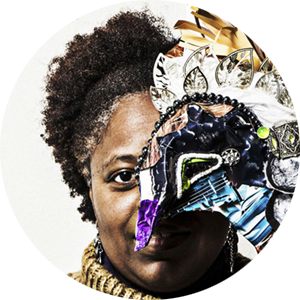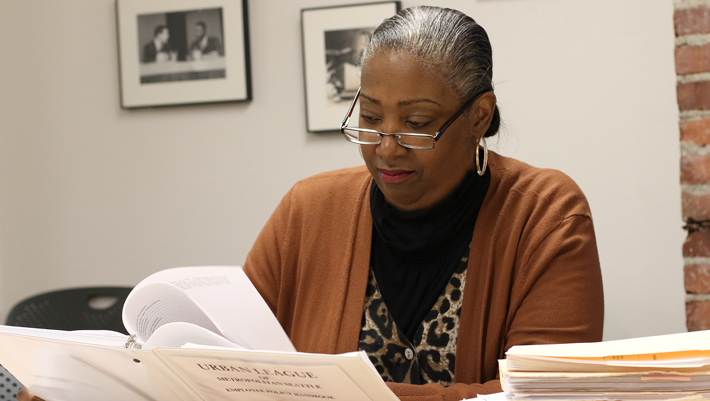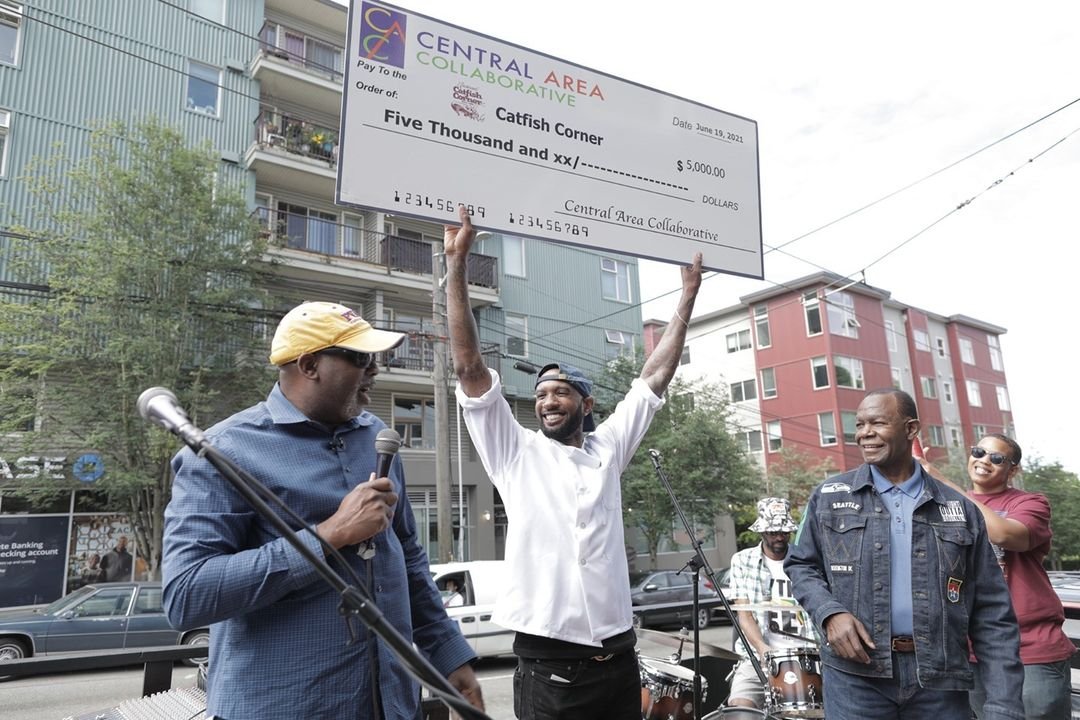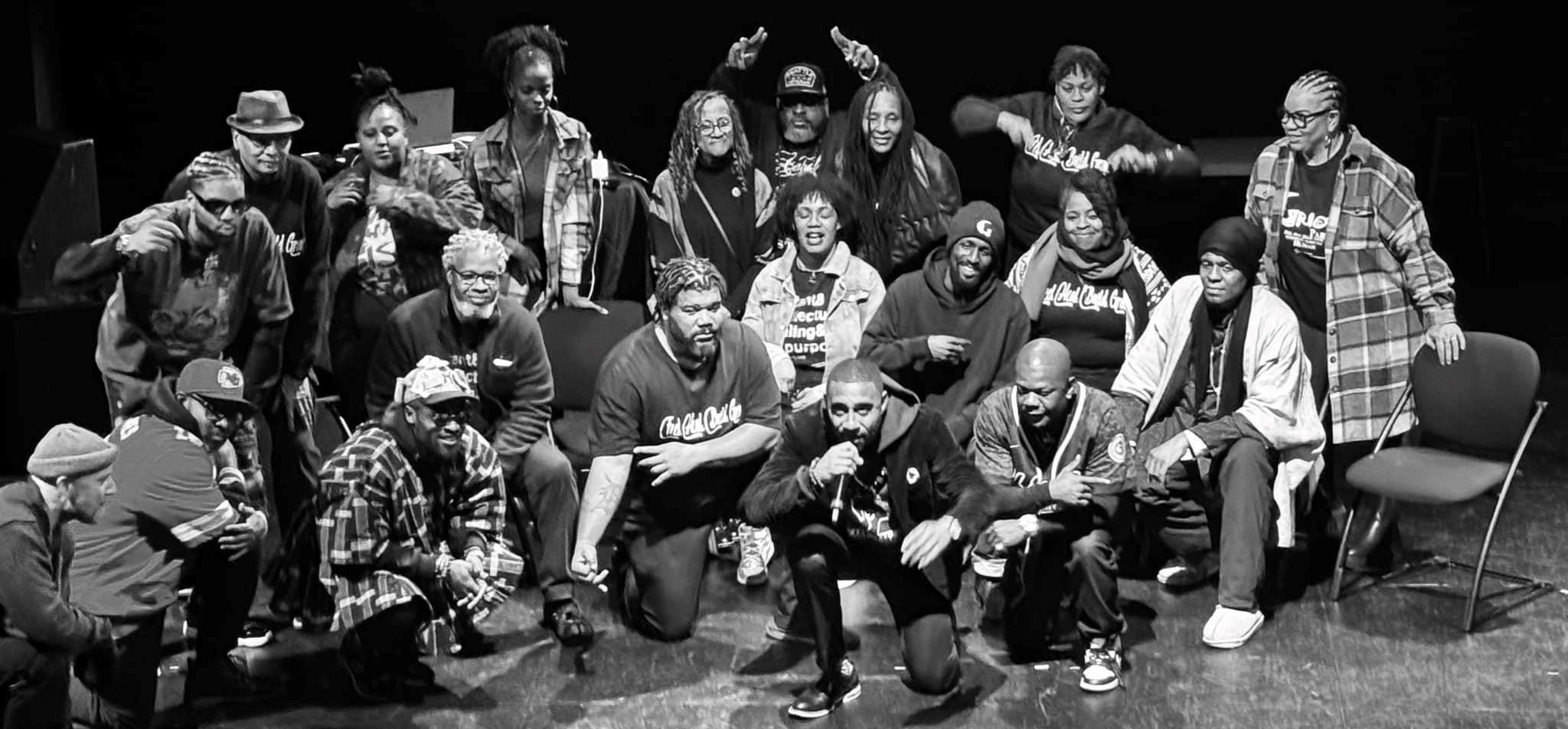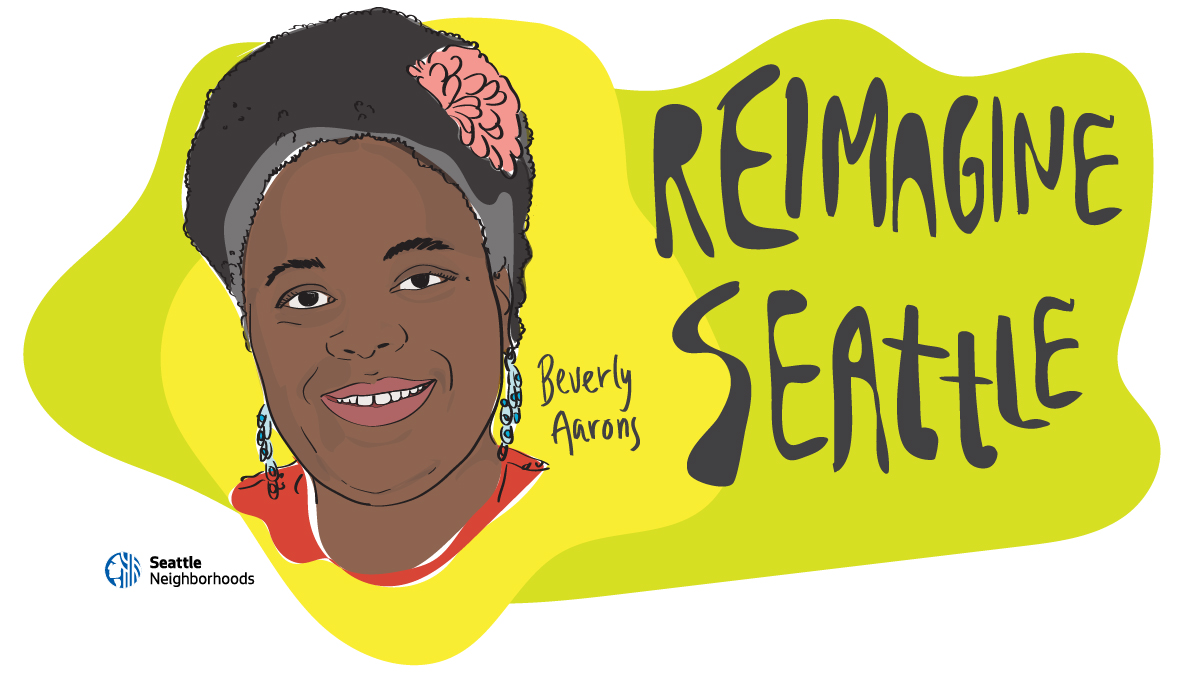
The challenges of the past two years have changed the way we live, the way we work, and the way we show up for each other. They have also given us a rare chance to collectively reimagine our future. Through the Reimagine Seattle Storytelling Project we invite community members to reflect on their current experiences in Seattle, how they have been impacted by recent events, and their hopes for the future of our city.
The Gift of Beauty
by Beverly Aarons
Think big. Think radical. Think innovative. That’s the mind frame we should step into when “reimagining” Seattle, right? Maybe. And, it depends. That’s how I began – thinking deeply about affordable housing, poverty, and the mental illness and drug addiction ailing many in this city. But then I got quiet, and I began to think smaller – microscopic. I began to wonder about how much the little things really matter. How the way a city manages the small (and mundane) matters is often indicative of its capacity to manage the monumental challenges it will inevitably confront. And I asked myself: Can a city that fails to manage the gifts it already has really create a prosperous and healthy future?
For ten years I’ve called Seattle my home. And most recently (since 2017), I’ve lived in Pioneer Square, this city’s original neighborhood. I live on a tiny street – Prefontaine – named after a famous (and beloved) priest, Father Francis X. Prefontaine. Prefontaine was known for his wealth and generosity. In 1870, he built the city’s first Catholic church which was described as ornate and regal. And upon his death in 1911, he bequeathed to the City of Seattle $5,000 (today’s equivalent of $136,000) to build Prefontaine Fountain which is right next to the Pioneer Square light rail station. Construction was completed in 1926. This is the oldest fountain in the city – Seattle’s first fountain. Are you still with me? I know many of us are bored with history. But this is important to my point. Prefontaine Fountain was a gift to the city – to all of us. It was designed by the famous architect Carl F. Gould. The designer of the Seattle Art Museum and many other buildings in the Pacific Northwest, Gould was part of the City Beautiful Movement which was committed to infusing urban areas with “beautification and monumental grandeur.” The Prefontaine Fountain, in its original glory, was a part of that movement – a gift of beauty to Seattle’s descendants.

Now let’s ask ourselves, how did we treat that gift?

Today – nearly 100 years later – Prefontaine Fountain is only a shadow of its beautiful self. Clearly neglected and abused, the fountain has fallen into disrepair. On any given day, visitors to the fountain will find it filled with brownish water and trash. What does this say about us as a city? What does it say about the kind of future we will create even if we start with the best of intentions and the most generous benefactors?
Values (noun): basic and fundamental beliefs that guide or motivate attitudes or actions
What does it say about our fundamental beliefs that we have allowed a nearly 100 year old gift to fall into disrepair? Does it say that we value the things that we have? Does it say we appreciate the people or institutions that gave us those gifts? Who are we really? We need to answer this question honestly if we are ever to reimagine Seattle as the kind of city we want to gift to our descendants.
Inheritance (noun): the acquisition of a possession, condition, or trait from past generations
Have you ever had a friend or an acquaintance that seemingly had everything? Maybe they were born to wealthy parents, grew up in a beautiful home and safe environment, received a fully paid college education, and inherited a not-so-insignificant sum of money and a profitable family business. What did that friend do with their inheritance? Did they maintain the family business, making it more profitable year-after-year? Did they invest their cash so they would have something to leave to their own children? Or, did they squander it? Did they party for decades, spending cash recklessly, and neglecting the business of life, only to find themselves facing bankruptcy, a house in foreclosure, a bank account with only a few cents in it? Cities are like people. Some cities inherit natural and manmade wealth and beauty while others strain under the weight of their forebears’ bad decisions. Some cities cultivate the gifts left to them while others let those gifts rot. What kind of city is Seattle? What kind of city do we want to become?
Pattern (noun): a reliable sample of traits, acts, tendencies, or other observable characteristics of a person, group, or institution
Seattle has a pattern of behavior: Every decade (or few) we recommit ourselves to fixing up Prefontaine Fountain. The first record I could find of this pattern was in 1970. On September 18, 1970, the Seattle Daily Times reported that the Committee of 33, a group of women volunteers, had given $3,000 ($20,000 in today’s money) to restore Prefontaine Fountain, and the City of Seattle had agreed to pay for the rest of the costs. Something similar happened in 1984 when Jacquette Blanchette was working with a group of unnamed volunteers to restore the fountain. And then again in 1990 when the fountain was rebuilt after 3rd Avenue was “restored” and the new Pioneer Square light rail station was opened. And now, here we are in 2020 facing the same issue – Prefontaine Fountain once again in disrepair. But why?
I want to first address the elephant in the room. Everyone who has lived in Seattle for more than 20 seconds knows that the Prefontaine Fountain is a favorite hangout spot for some of our most vulnerable residents: the mentally ill, drug addicts, and people facing homelessness. And I am also fully aware that some in our city will use that as an excuse to neglect that fountain. Their values say, “Well, look at who is using that fountain! Why bother!” This is exactly the type of flawed thinking that needs to be reimagined FIRST before we can ever build a desirable future for this city. If we believe that we should not maintain an ancient gift simply because the poor and vulnerable use it, there is something seriously skewed about our thinking. All of Seattle’s children inherited that fountain – every race, creed, and class. We all deserve to enjoy the beauty of that fountain no matter our status or condition. That’s who I want us to become: a city that understands that our gifts must be maintained to impeccable order no matter our circumstances.
Descendants (noun): one originating or coming from an ancestral stock or source; one descended from another; one deriving directly from a precursor or prototype
On December 26, 2018, Mayor Durkan issued a press release containing the 2019 budget and promises to “improve the Prefontaine Fountain.” And if this promise is followed through on, it will be the fourth attempt to restore the fountain in the past 50 years. But our city ancestors have already created a pattern of bad behavior – they restore a thing and then allow it to fall into disrepair. How can we become a new prototype?
Truly great cities – and I believe that Seattle has the potential to count itself amongst the greatest – understand that nothing is stagnant. Every building, every road, every bridge, and yes – every fountain, is either maintained, nurtured, and cultivated or it is neglected and put on the road to becoming rubble. There is no “setting it and forgetting it.” Everything is in a process-of-refinement – forever.
We Are the Ancestors
We are the ancestors our descendants will worship (or condemn). In many indigenous spiritual systems around the world, ancestors are venerated. And whether we believe in one god, many gods, or no god at all, we all worship (or condemn) our ancestors with our actions. Every piece of trash left to fester in Prefontaine Fountain is a desecration. Every stone crafted turtle covered in excrement is a blasphemy. Every puddle of dirty water quenching the thirst of rodents is a violation of our covenant with this city’s descendants. How will we be remembered? As apostates? Or, devotees?
I reimagine Seattle as a temple. And every effort to restore Prefontaine Fountain is a prayer. Every commitment to clean away the daily filth of city life from its stone shoulders is a genuflection. And every moment our city spends maintaining its glorious and aspirational beauty is pure reverence.
I have a vision: There’s a girl. A toddler – maybe 2 or 3 years old. She scampers to the edge of the fountain and points. She’s never seen anything so fascinating – colorful koi glide through the pristine water, and the art deco tiles glimmer beneath them. The gentle whine of a violin permeates the air. There’s a busker tucked in a corner. He leans against the stone ledge and gently brushes his bow across the violin strings. Workers sporting airy suits drop cash into his open case. It’s a profitable day. A group of teenagers perch on a bench, they gossip and flirt while eating ice cream. It’s a hot summer weekend. A tourist takes a selfie – they want to remember visiting Seattle’s oldest fountain, and they’re impressed that it’s so well taken care of. The weekend rush of tourists emerges from Pioneer Square station. A historical reenactor waits for them near the fountain – he will tell the story of Seattle’s oldest fountain and most importantly, the story of its people – its ancestors.
